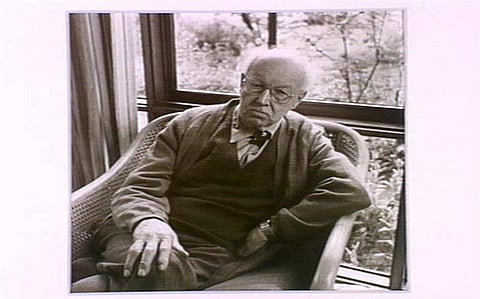
- Home
- न्यूजग्राम
- NewsGram USA
- India
- World
- Politics
- Entertainment
- Culture
- Lifestyle
- Economy
- Sports
- Sp. Coverage
- Misc.
- NewsGram Exclusive
- Jobs / Internships

New Delhi, August 15, 2017: Renowned Australian Geographer of the time, Oskar Spate, made a number of visits to India.
In the December of the year 1955, Spate arrived in Chennai to begin his tour of India. The real purpose of this tour to India was to make the second edition of his book 'India and Pakistan: A General and Regional Geography'.
George Kuriyan, professor of geography, along with students were awaiting Oskar Spate in Chennai. They were to accompany Spate in his journey to New Delhi, where they would be an audience to the 1956 Republic Day Parade.
Upon reaching Agra for the Indian Science Congress, Spate chanced upon Jawaharlal Nehru. Spate was attending the Science Congress as representative of Australia and New Zealand Association for the Advancement of Science.
Spate recalls this meeting in his 1991 'On the Margins of History: From the Punjab to Fiji' where he remembers Nehru as having an impressive intellectual grasp. They had a conversation regarding the Nehru government's redrawing of the Indian territories according to lingual identities.
For one, Spate argued that Jhansi deserves to fall under Madhya Pradesh and not Uttar Pradesh. Nehru agreed with Spate.
Interesting to note is the background where Oskar Spate stems from. The geographer was part of the cartography that was revised at the time of partition. This background has something to do with Jhansi.
Till two years back, India's borders with Bangladesh on the map created a big question on the nature of the enclaves. For decades, people living in this conclave were ignored. These questions were answered in 2015 by redrawing the map.
Like Jhansi, even the princely state of Baroda was a mess that needed up clearing too. The 1909 version of Baroda map hardly showcases a state. As LiveMint puts it, "Incorporating Baroda state into the Indian republic was thus not just a matter of unity and statesmanship but also logistical sanity."
This mess and anomalies in Indian map came to the notice of British officials at the time of the implementation of two state theory, i.e. the partition of India and Pakistan.
Spate and few others had realized that geography could not go hand in hand with politics, considering the religious aspects and distinctions.
During the WW II, Spate worked as a military censor in India and was also injured the Burmese War. In 1947 when Spate was residing in London, he received a letter from Mirza Ali, Imam of Ahmadiyya Mosque in London.
The Ahmadiyya Movement was born in Qadian which is 60 km from Amritsar. The Imam was pleading that Qadian is put on the Pakistani side of the map. Qadian is the place where Mirza Ghulam Ahmed proclaimed himself the chosen caliph.
Spate was quick to jump in this problematic scenario. He would get a chance to be sent out on a sponsored tour of India.
The three parties involved (Congeress, Muslim League and Sikhs) made the partition of Punjab problematic.
Congress desired Nankana Sahib be included. Muslim League wished for the line to be drawn east side of Amritsar so as to include Ludhiana and Gurdaspur. The Sikhs somewhat sided with the Congress.
Although Oskar Spate was fond of Qadian and the residents, the place eventually fell on the Indian side of the map.
As for Jhansi, the State Reorganization Committee got back to Spate in 1991, explaining to him that the locals wanted to stay in their British administered province and did not want to risk resettlement in a new state.
Also, it was Rani Laxmibai after all whose rebellion led to the annexation of British administered territories.
– Prepared by Saksham Narula of NewsGram. Twitter: @Saksham2394
